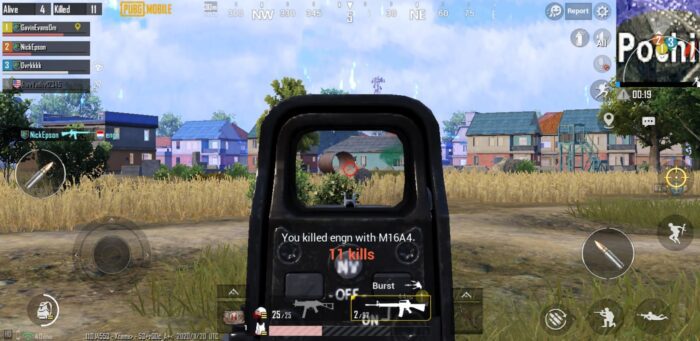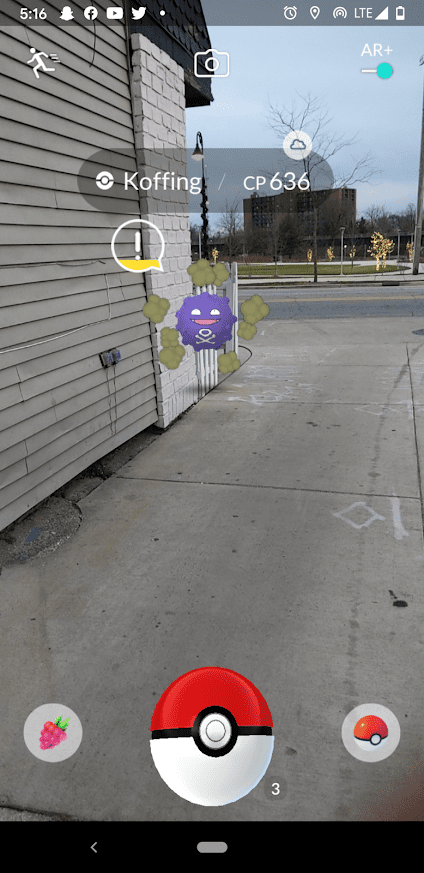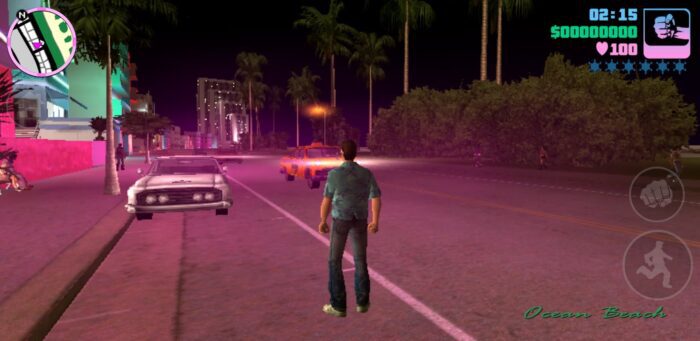Things Mobile App Developers Can Learn From Mobile Games
Gaming has shifted from something that was exclusively done at high-power computers or in front of consoles to a task we now comfortably do on today’s mobile platforms – since the era of the Game Boy, developers have been putting substantial effort into mobile games, and today, we carry a mobile game system with us everywhere we go. As developers, these games can both entertain us and teach us valuable lessons about the climate of today’s marketplaces.
Even if you’re not a gamer, it’s worthwhile to spend a little time familiarizing yourself with top-performing games on the marketplaces either reviewing content like this blog or even diving in and playing a little. Developers who are building games need to have a solid understanding of the gaming industry as a whole to ensure that they’re following suit with valuable trends. If we hone in on a few of today’s most popular games, we’re certain to learn a thing or two about how to improve not only the games we make but other software as well.
A glance at today’s most popular mobile games
Right now, if you were to ask the various search engines what today’s most popular mobile games are, you’ll find that a select few that always surface. The action game Player Unknown Battleground, or PUBG for short, the ever-popular Pokémon GO, and the timeless Grand Theft Auto. Of course, there are a ton of other great games out there but each of these games has something they do particularly well.
For those who aren’t familiar with these titles, here’s a quick rundown:
PUBG. This battle-royale, action-shooter feels like a hybrid between Fortnite and Call of Duty. Players team up and enter a large, well-designed battlefield that scales down over time, forcing players to confront each other in a smaller zone.
Pokémon GO. As a game that takes place in superimposed reality by using AR, this game was the first of its kind. The player’s character moves around in their world on top of a real map, based on a user’s geographic area. Pokémon appear at random which can be tapped on to initiate an encounter where players toss Poké balls by swiping their screen in attempts to capture the creature.
Grand Theft Auto. These ports of the popular action series feature the same intense third-person action as their original counterparts but on mobile. Essentially, each of the ports stays true to the original but feature touchscreen controls to carry you through the game’s many shootouts and driving sequences.
What we can learn from today’s popular mobile games
Each game has its own merits that developers need to understand to replicate the results for their creations with the end goal of earning revenue. We’re going to dive into PUBG first then discuss how the other two accomplish this feat.
PUBG: masterful execution in gameplay and customization
The developers for PUBG did an excellent job at spinning a couple of popular formulas together into a game that feels familiar enough that a shooting game enthusiast can jump right in. They do it right – which is apparent from the first time you hop into a game – by adapting an existing formula for the game’s layout which makes it incredibly accessible. Had they tried to be overly original, there’s a good chance that the learning curve would create enough frustration that they’d lose their audience quickly. The game looks great, feels incredibly responsive, and features copious rewards for completing matches that keep players hooked.

The game is offered as a freemium model so it’s free to download and play. Players are rewarded based on metrics such as time played, the number of players they defeated, times played and won at certain maps, and so on, all of which either transpose directly to items or one of the game’s “earned” currencies. To earn additional rewards faster, such as outfits, perks, and skins for your weapons, players can purchase a different set of currency called UC which can also be used to exchange for items or one of the game’s other two currencies.
From a user standpoint, the different items and currencies that can be obtained offer enough variety that those so inclined to have the coolest looking character and weapon skins can easily do so by forking over just a little cash, and misers who are inclined to grind for their rewards are free to do so without hitting paywalls just to enjoy the game. However, the rewards you pay real money for are arguably much more visually appealing.
PUBG has followed suit with other major titles like Call of Duty and put a lot of time into creating a copious amount of “looks” that people can purchase a la carte. This formula combined with excellent gameplay – and this is coming from someone who prefers a console controller or keyboard – keeps users engaged.
What we learn from PUBG is that it successfully creates a highly-custom experience backed by solid gameplay that users are willing to pay for, seeing as the game has raked in $221 million so far this year. Engaging gameplay along with a plethora of customization options are what keeps this game as a top performer in app marketplaces. This ties back to the idea that personalization is a major driver for user satisfaction in all software as it allows them to take control of their UX for the better.
Pokémon GO: an inherently immersive experience
As a casual game with unique gameplay, Pokémon GO offers players an immersive experience that takes place in the world around them. By utilizing a map of your real environment along with “capture sequences” that unfold after tapping on a nearby creature, the game does an excellent job of making players feel like they’re in the midst of the action.
The other major component that Pokémon GO does extremely well is the gamification aspect of leveling up your character and the Pokémon you capture. Your characters, Pokémon, and inventory grow after completing tasks like catching Pokémon, participating in raids, or fulfilling other actionable items. Pokémon GO regularly rewards players in some way yet it commands a lot of time to achieve big rewards which players can expedite by making in-app purchases to ensure they have the best items available.

Pokémon GO has an overall unique monetization model but it mostly makes money from IAP – though the game came out in 2016, it has commanded over $900 million in in-app purchases since that time. The gamification aspect, immersion via AR, and fun playing experience combine in a way that has engaged players enough for the past four years to continually capture new Pokémon, level up their character, and beef up their Pokémon. Offering IAP for items that keep the game moving is a win-win as users are happier playing the game and publishers keep making money. After all, there’s nothing worse than running into a rare Pokémon and not having the right ball to catch it!
Grand Theft Auto for mobile: games people still pay to play
The Grand Theft Auto series is among one of the most popular gaming series of all time – today, the series of games that were first available on the PlayStation 2 are now available in their full form on mobile app stores. Between the enthralling story and solid gameplay, the games still hold up today. In fact, as old as these games are, they’re still popular enough that people are forking over around $5 or more a game.

Each Grand Theft Auto offers great gameplay mechanics along with an intriguing story that unfolds like a movie. Many gamers find themselves highly drawn to great storytelling, with some replaying a game several times to fully digest every aspect of the plot. This notion is supported by the reviews in Google Play which reveals that many of the users appear to be those who’ve already experienced the game at some point in the past. Unlike PUBG or Pokémon GO, the story acts as a driver to keep users engaged, whether they’re replaying a title after years or just picking it up for the first time.
Though this game lacks the level of customization of PUBG and the deep immersion offered by Pokémon GO, the story and gameplay successfully brought former players back around for another go. We see that the power of storytelling combined with fun action sequences is enough for people to justify spending a small amount, even if it’s just to have sitting on your phone for when the mood strikes.
The takeaways: build what gamers want
Looking at the entire game industry, it’s clear that people love the ability to customize their character, environment, and gear. It seems as though this is something the game industry has realized for some time as games from prior generations often offered costumes as rewards for completing certain in-game challenges which drove some people to log many hours just to change up the look of their character.
This phenomenon is much deeper than most realize as these customization options give gamers a valuable tool for self-expression, much the same as how style makes us feel good. Customization has a profound ability to engage individuals so developers should do as much as possible to ensure that players can tweak aesthetics to their liking for best results.
In the case of Pokémon GO, it was a game that came along that no one knew they wanted. As such, it was a bit of a gamble for Niantic and Nintendo but it panned out because of the combination of featuring Pokémon, a franchise that pulls in about $4 billion a year simply because people adore the little beasts, and unique, immersive gameplay. It’s really one of the first games of its kind to reward people for walking around. Because the gameplay is so engaging and Pokémon are so endearing, gamers are willing to put time and money into the game to ensure they’re able to thoroughly enjoy the game.
Grand Theft Auto is another franchise that gained notoriety because the games are so well put together. Grand Theft Auto V for Steam and consoles also incorporates the customization element we discussed with PUBG which allows it to further engross its audience. As far as the mobile games are concerned, people are still paying for these games because the gameplay and storylines are so captivating.
In the gaming industry, the competition is thick, especially because it’s so easy for anyone to publish a game to either mobile or console stores. A successful game needs to at least have one of these elements to perform well alongside responsive gameplay. Players will pay extra for rewards, to customize some portion of a game, or for a great storytelling experience.
Applying what we learned from games to other apps
Many of the lessons we learn from games have a broader application beyond entertainment. As people love customization, consider ways that you can offer your users a way to tweak your platform to their liking. Instead of offering a static layout, it makes sense to allow users to customize elements like color or menu shortcuts. At the very least, make sure you’re at least offering dark mode for more comfortable viewing!
Perhaps the biggest lesson that we learn from mobile games is how gamification adds to the user experience. We see this in Reddit with their Karma rating and badges, Snapchat’s scoring system, the number of reactions we receive on social media, trophies you unlock on PlayStation, just to name a few. These “scores” and “badges” drive users to keep using the app, even if this number doesn’t unlock anything new. For many, these elements are the biggest driving factor for engagement.
Blue Label Labs understands how to make successful games
By looking at each scenario above, we see that the UX of games drives sales when users are satisfied with some combination of elements. Creating a rewarding experience whether through AR, customization, or storytelling is key to both capturing an audience’s attention and getting them to spend money. For games to truly make an impact and earn income, they need to find a way to entertain players in one of these ways.
Our team takes your user’s needs seriously, whether we’re building software for business or entertainment. Get in touch with us today to learn how we can help you build an engaging, profitable game.









